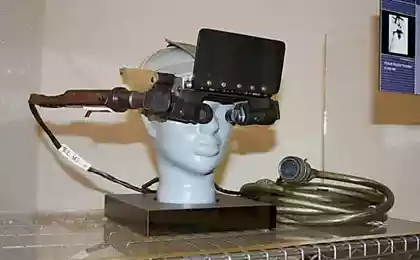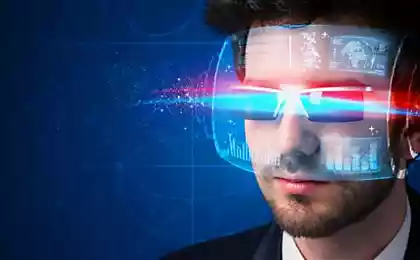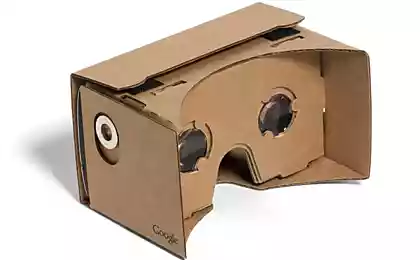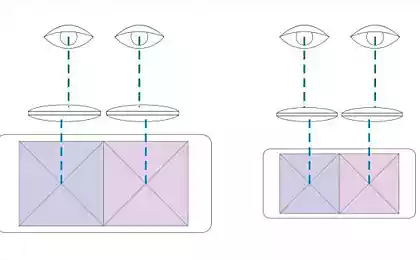739
virtual reality technology in medicine

Today, the vast majority of new IT-technologies primarily find application in the field of entertainment. A striking example - a virtual reality. But helmets and glasses, plunges us into other worlds, can be useful not only for some sophisticated games. For example, a virtual reality technology can be widely used in medicine.
When in October last year, Microsoft demonstrated a prototype Project X-Ray, gamers around the world were delighted. Users with glasses of virtual reality (VR) and with arms in their hands fought against the robots, break through the wall. Even in the first half of 1990 have been repeated attempts to use VR technology in the gaming industry. At the time, few people imagined a different scope. But BP today are increasingly finding applications in areas such as scientific research, sports, military, development, education, transport, and even health care.
According to the forecast of research and consulting company IndustryARC, by 2020 the global market of technologies of virtual and augmented reality in health care will reach $ 2, 54 billion. In general, they will be used for the training of doctors and rehabilitation of patients.
In April this year, an operation to remove a cancerous tumor was carried out at the Royal London Hospital. This event is significant in that the entire course of the operation in the broadcast network with points Google Glass, which have been put on the surgeon. 13 000 medical students are not just watched almost live (with minute delay), but the surgeon asked questions that appear as text on the periphery of his vision, and he answered them voice.
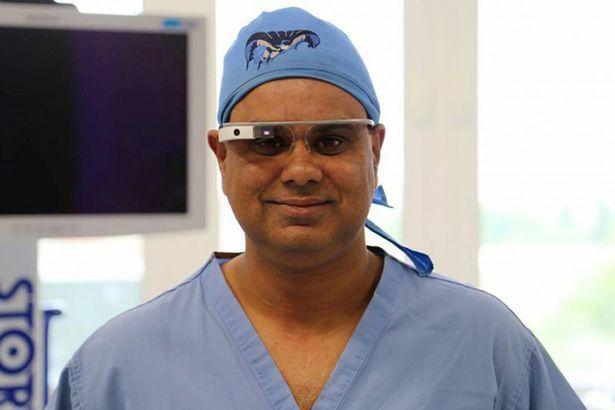
Of course, the operations were taken in the past, but this is the first time that:
- The spectators could watch the whole process of eye surgery
- The operation could be viewed in near real time. all mobile devices, including glasses BP.
- You could remotely ask the surgeon questions and receive answers.
But even with the freedom to look around from side to side while watching the video, the students remain passive observers. It is therefore logical that BP is used to create three-dimensional simulations with a full immersion in which future doctors can sharpen their examination skills and treatment of patients. For example, the company Medical Simulation Corp. developed a set of Simantha, where cardiologists, surgeons learn to explore the heart of man. It uses a full-size dummy, allowing to enter the contrast agent in the "artery" and use a variety of tools for all kinds of manipulation of the "heart". The man controls all its actions on monitors that display a full simulation of heart innards. This removes all sorts of complex telemetry and accurately respond to the doctor's action, as it happens in life. Able to simulate the individual characteristics of the patient's circulatory system, and even non-standard reaction to various medications.

For the training of health workers of different professions and apply more traditional technologies BP - topical application on the basis of three-dimensional engines. For example, under the brand name HumanSim produced programs for learning the basics of communication with patients, anesthesia, sedation and mechanical ventilation, first aid in the military field, etc. HumanSim The engine can also be used to create custom medical simulations.
Perhaps it is in surgery technology BP are the most widely used. It is understandable - it is difficult to find another area of medicine in which the visualization and feedback on the actions of the doctor plays an even more important role.
As in any other profession, surgery skill works enough with the experience. No dummies can not be compared according to the degree of the likelihood with the qualitative performance of the virtual simulator. And when training in dissecting not always "working material" responds to students' mistakes as well as a living person, for example, if you accidentally hurt a blood vessel. Yes, and all the students are not impossible to satiate. A virtual simulators do not suffer from a lack of samples and virtual bodies.
For example, at Stanford University developed and implemented hardware and software systems with a high degree of detail and the various organs of the human body, providing tactile feedback. This allows the surgeon with learning to navigate the situation, not only visually, but also tactile.



Working with digital models of human organs, in a virtual environment, copying the present, it has already taken place, surgeons are trained to perform delicate and complex procedures. This helps to improve the accuracy of the doctor's actions, reduce errors, and postoperative complications. In addition, sometimes the treatment requires the use of relatively rare species of intervention, which many ordinary doctors simply do not face. And the lack of real experience is quite possible to partly offset the virtual simulators.
By the way, allowing BP to train doctors and using robohirurgicheskie installation - remote surgery and microsurgery
.
They are in this respect, even a little bit easier, because the display - an essential working tool of these professionals. According to some studies, VR simulators significantly increase the efficiency of doctors specializing in robohirurgii.
All for the benefit of patients
VR technologies are used in health care, not only for the training of doctors. Rehabilitation of patients - an important step on the road to recovery or adaptation. For example, many patients who have lost limbs as a result of injury or surgery, faced with phantom pain syndrome. This can be expressed in the sensation of burning, itching, tingling and other forms. Until recently there was no effective methods of getting rid of phantom pain. The Chalmers University of Technology (Chalmers University of Technology), Sweden, the patient with an amputated arm connected to the cult of the sensors, the signals of a contracting muscle, and the computer in a virtual broadcast their hand movements are displayed in VR glasses. And the hand is not simply moved, the patient could with the help of her drove the virtual car. That is, the brain receives at least a visual confirmation that the limb, which he tries to control, there are no signals and respond. As a patient said, the intensity of pain then significantly reduced, and they were less likely to occur. However, it was not a full-fledged clinical trial on a sufficiently representative sample, but still the result is encouraging.
Another interesting example of using BP - therapy of patients with neurophysiological disorders. For example, setting MindMaze human motion monitors and displays them on the display. According to the developers, trying to carry out the proposed tasks, the brain gradually recovers and rebuilds disturbed neuronal connections.

Our consciousness - an incredibly powerful tool that can completely change our perception of yourself, your body and the outside world. Unfortunately, we are able to operate very poorly this tool. But there are also positive examples. Patients with extensive burns of the body to suffer from severe pain that is not possible to completely remove the drugs.
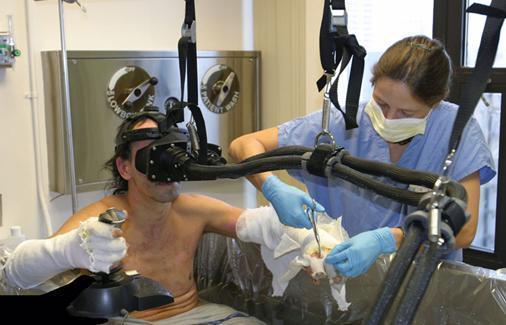
Especially virtual game SnowWorld has been designed for them. The action takes place in an icy world, as the enemies are the snowmen and penguins, and all weapons - from ice and snow. According to research, thanks to this game, burn patients spend three times less time to think about the pain of burns:. 22% of the time instead of the 76%
BP applied for the treatment of psychological disorders. For example, marked by numerous cases of fainting phobias, exposure therapy when used in combination with the points BP. For example, a person with arachnophobia demonstrate virtual spiders. First, in the distance, then they can be approached, and even interact with the spiders.

And suffering from acrophobia send virtual walk on the roofs of buildings, with a gradual increase in the number of storeys. There are applications for the prevention of fear to fly, drive, and a number of other phobias.
Virtual simulations of military operations may serve not only for entertainment and training soldiers, but also to alleviate the symptoms of post-traumatic stress disorder in veterans. This is achieved by harping on different scenarios and traumatic events that caused this mental disorder, with the parallel work with a psychologist. Often used tracking the patient's eye movements, which helps to better define the traumatic events for the subsequent working out with your doctor. But while that among the experts, there are conflicting opinions regarding the effectiveness of BP's use for the treatment of PTSD.
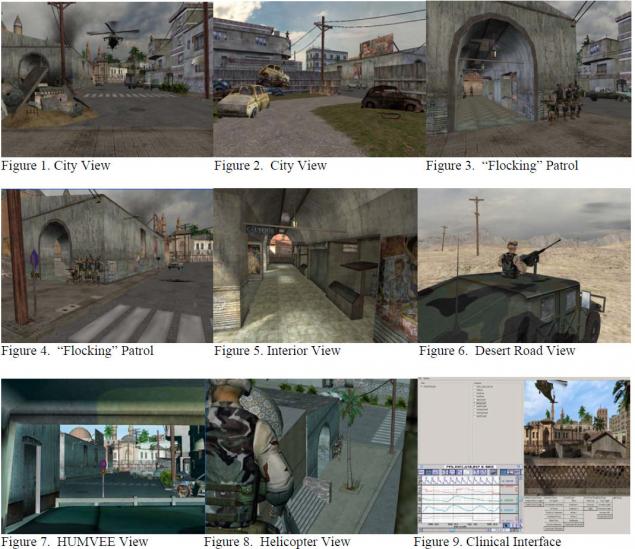
Finally, BP technology used for social adaptation of autistic children. This disorder is manifested in different ways, and in many cases, autistic have a hard time when they are faced with the rules and features of human society and the world. And with BP can be safely beat different situations, showing how best to behave in certain situations.
In general, VR technologies are making the first steps in health care. There is a growing availability and variety of devices and software, and it is possible to predict with reasonable certainty that the new technology will be used more and more actively in the training of doctors. It is possible that there will be new development at the junction of BP, big data and artificial intelligence. For example, a system that will be in real time to analyze the current situation and to develop recommendations and visual clues to the physician, facilitating diagnosis and treatment, reducing the likelihood of medical errors.
Source: geektimes.ru/company/asus/blog/277028/
19 gross kinolyapy in the movie "Titanic"
Scientists from Oxford proved that fish can learn to distinguish the faces of people









